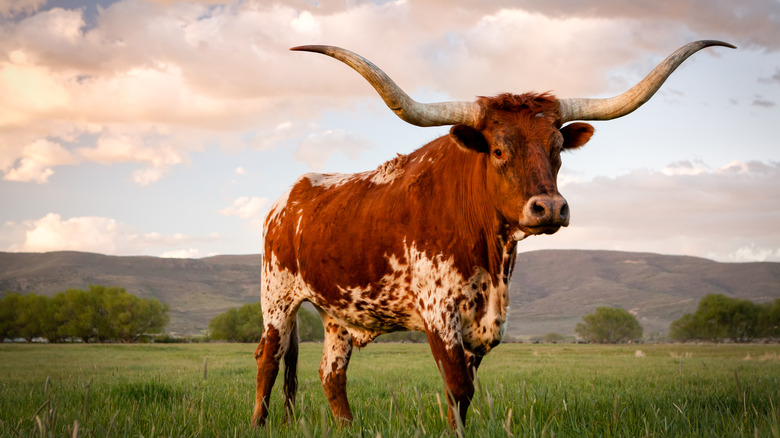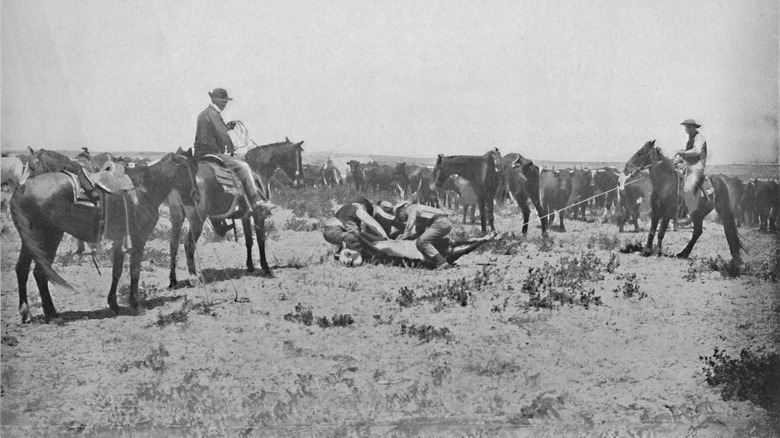What Cattle Drives In The United States Were Really Like
Cattle drives are an important part of the American identity, alongside cowboy hats and covered wagons. They're often associated with the 19th century, and the period of westward expansion. Truth is, though, cattle drives have happened on the North and South American continents since European colonization, beginning with the Spanish in the mid-16th century, per Encyclopedia. It's hard to fathom how grueling it was, all those centuries ago, driving thousands of cattle across the hot and dusty prairie for days on end. Here's what U.S. cattle drives were really like.
As the cattle industry became increasingly central to the United States economy in the 1850s, cattle trails sprang up all over the country, particularly in states like Texas, Kansas, Colorado, and New Mexico, per Texas History. Prior to the Civil War, and without much market for beef, longhorns were allowed to roam freely, especially in Texas. Following the war, though, the cattle industry boomed in certain parts of the country, as did the importance of driving immense herds of longhorns to market, via the Cattle Raisers Museum. In this period, cattle drives became more commonplace, and the existing cattle trails were crowded with traffic.
Hazardous but worth it
According to Encyclopedia, one of the most historically significant 19th-century cattle trails is the Chisholm Trail, roughly 600 miles long and stretching from between Abilene, Kansas, to San Antonio, Texas. Established in the 1860s, the Chisholm Trail was 50 miles wide in parts, with flat terrain and lots of grazing areas for cattle. These were arduous journeys to be sure, but the higher prices commanded at the other end of the trail drove the trail boss and cowhands onward. Those journeys were not without risk, however.
From the very beginning, the trail boss and cowhands were forced to drive cattle across treacherous stretches of river and through traditional Native American land. Those working the trail were also often approached by representatives from local towns, seeking to lure them into spending money in the local economy, per Encyclopedia. By the early 1870s, roughly a million head of cattle were driven across the major American cattle trails, and with the decimation of the American buffalo, ample grazing land opened in the West, increasing demand. For these reasons, cattle trails were soon bisected by barbed wire demarcating private property for established ranchers and landowners.
Thanks to the obstruction of cattle trails, as well as the advent of new cattle breeds and homestead laws, cattle drives declined. They were all but over by 1895, though some persisted into the early 20th century. A few still exist today on a much smaller scale. Without the great cattle drives of the 19th century, however, the American West and the modern beef industry would be very different indeed.

